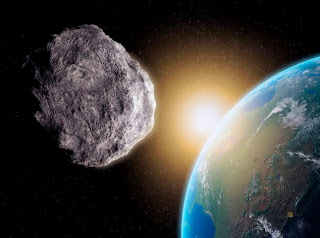There are at least two companies that have plans to mine Asteroids to gain access to the abundant source of minerals and raw materials, but can that be done? NASA has a mission to discover just that. Launching in 2016, the OSIRIS-Rex spacecraft is designed to collect samples from the asteroid Bennu; returning in 2018 to Earth. This mission will lead the way in opening space even more than just near-earth orbit AND could add trillions of dollars, pounds or yen to the world economy.
The mission, like all missions that NASA undertakes, will be beneficial in countless ways. It is expected to accelerate technology, decrease world tensions due to raw materials, increase our knowledge regarding what actually makes asteroids tick, show that recovery of the materials is possible, on so on. Again, for those of the Earth’s population who believe we should stay put, seeing an asteroid up close when it isn’t slamming into the Earth could be advantageous! Isn’t understanding the ‘enemy’ one of the basic tenants of ‘war’? And make no mistake, we are at war with asteroids that threaten Earth! – ”In the moment when [we] truly understand [our] enemy, understand [it] well enough to defeat [it]” Orson Scott Card, Enders Game.
Asteroids vary in size and make-up. There are three main types – though in actuality there are: C, S, K, M, L, B, V, R, T, P, Q, F, G, X, O, E, and the list goes on. The three types, originally conceived in 1975, are C-Type for dark carbonaceous objects, S-type for stony (silicaceous) objects, and U for those that did not fit into either C or S, however this classification has since been expanded and clarified into the much longer list referenced. Bennu, the asteroid in question, is considered a potential threat, a possible earth impactor, and its make-up is unknown. It is considered an Apollo Asteroid, one of the ‘Earth-crosser’ asteroids, a Near-Earth asteroid whose orbit crosses that of Earth as observed from the ecliptic pole of Earth's orbit.. Case & Point: the asteroid that exploded over the town in Russia earlier this year, exploding buildings and breaking windows and injuring in excess of 1000 people is believed to be of this Apollo class.
Obstacles to this mission are plentiful, as is the case when anything is tried for the first time. We lack the experience in mapping and analyzing the materials making extracting them less easy to plan. Also, assume an asteroid of 100 meters in length. The gravity for this would be practically zero. The escape velocity would be around 0.3 kilometers per hour or 0.1 meter per second. If you were to drop an object at arm's length and it would take about 5 minutes to fall to the ‘ground’. But there are many asteroids so what if you take one that is seven times the size. Seven times the gravity? No. the gravity only doubles at its surface because the surface is further from its center of mass. So obviously you can’t launch and land on an asteroid the way one does on the Moon. Propellant would need to be used differently. Perhaps one should consider landing and launching via use of a locking spring. The spinning/rotation of the asteroid would tend to make things difficult so it would likely be necessary to despin it as one does a satellite right after launch. Overall there is much data about the environment of an asteroid that will be encountered for the first time with this mission. The OSIRIS-Rex (the Origins, Spectral Interpretation, Resource Identification, Security and Regolith Explorer) will explore and attempt to conquer this unknown.
NASA’s mission will seek to give us much, in resources, in mankind saving information, and perhaps the ever sought information of where we come from. Even if the mission were to encounter unknowns, it is likely whatever it achieves will only expand our knowledge. The people of Earth are divided on whether or not we should expand our foothold in the universe. This mission is important to both sides. If we stay, we need more resources, if we go, we need a better understanding of the different elements in space and how to utilize this one in particular for survival.





No comments:
Post a Comment